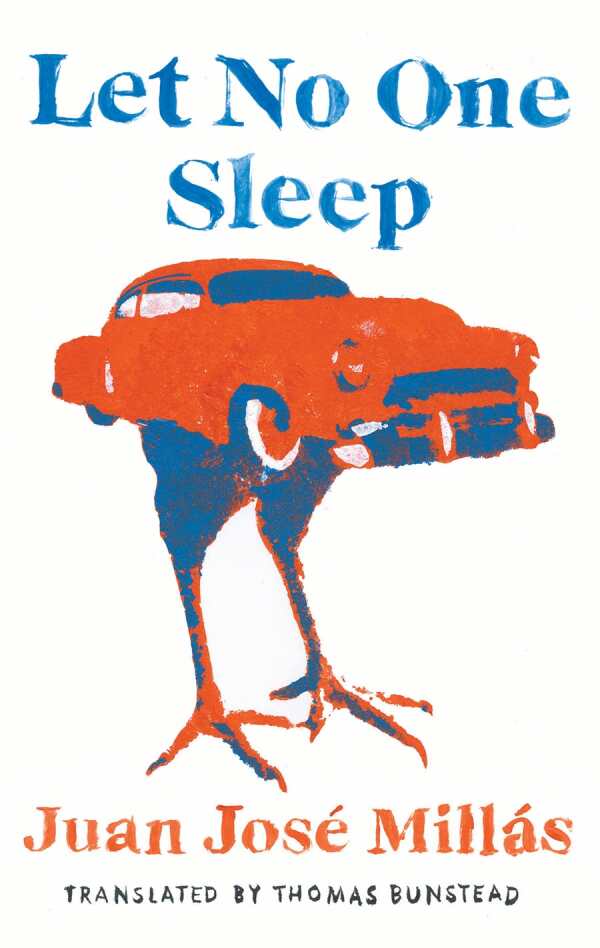Let No One Sleep
A taxi driver succumbs to her bizarre, terrifying delusions in Juan José Millás’s novel Let No One Sleep.
From the moment that she heard her downstairs neighbor playing opera through the air vent, Lucía knew that they were destined to be together. Her obsession drives her to drastic actions, all with the expectation that she will win the oblivious man’s love. When her efforts bear surprising, devastating fruit, Lucía finds herself teetering on the brink, with no one to keep her feet on the ground.
Birds have always played a large and foreboding role in Lucía’s life. Combined with her newer obsessions with the neighbor and the opera Turandot, her conviction that she is a “bird woman” takes over her life. She changes her appearance and gets a tattoo. As she drives about Madrid in the taxi she acquired after losing her job, she pretends she is in Beijing, where Turandot‘s title character sentenced countless suitors to death. And she judges others based on whether or not they, too, are bird people. Her reasoning is conveyed in such a plain, reasonable way as to enhance the book’s unsettling nature.
Like so many fantasies, Lucía’s does not come true in the way that she wanted. The book’s revelatory moment is horrifying in and of itself, as well as in its implications for Lucía’s future. While her daydreams built up slowly, now they go wild, unleashed by her shock and rage. In short order, her story goes from strange to harrowing. There is no turning back for Lucía, who settles on a course of action that will, in one way or another, send her over the edge.
Let No One Sleep is a disturbing novel about the powers of memory and suggestion.
Reviewed by
Eileen Gonzalez
Disclosure: This article is not an endorsement, but a review. The publisher of this book provided free copies of the book to have their book reviewed by a professional reviewer. No fee was paid by the publisher for this review. Foreword Reviews only recommends books that we love. Foreword Magazine, Inc. is disclosing this in accordance with the Federal Trade Commission’s 16 CFR, Part 255.

